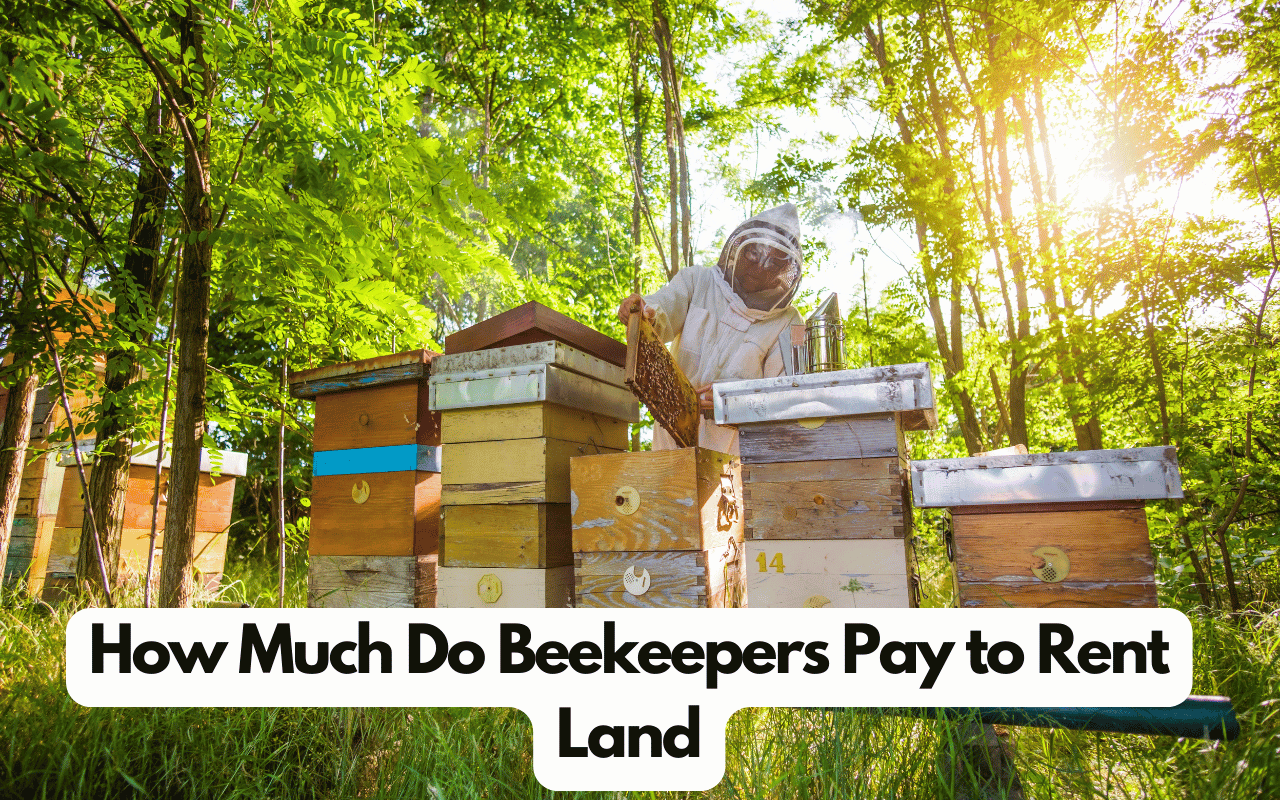7 Essential Factors: How Much Do Beekeepers Pay to Rent Land

Beekeeping is a rewarding practice that benefits both the environment and agriculture. However, many beekeepers face the challenge of finding suitable land for their hives. Understanding how much beekeepers pay to rent land is crucial for those in the industry. This blog post will explore the average costs, factors affecting prices, and tips for negotiating rental rates. We’ll also discuss the financial impact of land rental on beekeeping operations and explore alternative options for cost-effective solutions.
- 7 Essential Factors: How Much Do Beekeepers Pay to Rent Land
- Average Cost of Land Rental for Beekeepers
- Factors Affecting Land Rental Prices for Beekeeping
- Negotiating Rental Rates for Beekeeping Land
- Calculating the Financial Impact of Land Rental on Beekeeping
- Alternatives to Land Rental for Beekeepers
- The Impact of Location on Beekeeping Land Rental Costs
- Long-term Strategies for Managing Beekeeping Land Rental Costs
- Frequently Asked Questions
- Why do beekeepers need to rent land?
- How much do beekeepers typically pay to rent land?
- What factors affect the cost of renting land for beekeeping?
- Are there additional expenses beyond land rental for beekeepers?
- What are the benefits of renting land for beekeeping?
- Are there alternatives to renting land for beekeeping?
- What should beekeepers consider before entering a land rental agreement?
Average Cost of Land Rental for Beekeepers
When considering how much beekeepers pay to rent land, several factors come into play. Location, size, and demand all impact rental prices. Additionally, land quality and proximity to resources like water and nectar sources influence costs. Seasonal factors and local weather patterns also affect land rental prices for beekeeping. For instance, areas with harsh winters may have limited land availability, driving up prices. Moreover, regions with high demand for pollination services often have higher rental rates. Beekeepers must stay informed about these factors to negotiate effectively.
Factors Affecting Land Rental Prices for Beekeeping
Understanding the factors that influence how much beekeepers pay to rent land is essential for making informed decisions. Location plays a significant role, with high-demand areas commanding higher prices. Land size and quality also impact rental costs, with larger, well-suited parcels often more expensive. Local cost of living, overall land demand, and specific beekeeping regulations can affect prices too. Beekeepers should consider all these factors when negotiating rental rates. By doing so, they can secure fair prices for the land they need.
Negotiating Rental Rates for Beekeeping Land
When it comes to determining how much beekeepers pay to rent land, negotiation skills are crucial. Start by researching local market conditions and demand for beekeeping land in your area. This knowledge will help you understand fair pricing. Next, assess the land’s quality and suitability for beekeeping. Check for necessary flora, fauna, and water sources. High-quality land may justify higher rental rates. Consider the lease length and potential for flexibility in terms. Longer leases might offer stability but could come with higher rates. Prepare to walk away if terms aren’t favorable. Remember, effective negotiation can significantly impact your beekeeping operation’s profitability.
Calculating the Financial Impact of Land Rental on Beekeeping
To truly understand how much beekeepers pay to rent land, it’s essential to calculate the financial impact on your operation. Start by determining the average rental cost in your desired location. Research current market rates and consider land availability suitable for beekeeping. Next, factor in the size of land needed and the duration of your rental agreement. Don’t forget to include additional costs like transportation and hive maintenance. Compare these expenses to your projected honey production and other potential income sources. This analysis will help you determine if the rental cost is feasible for your beekeeping business.
Alternatives to Land Rental for Beekeepers
For those concerned about how much beekeepers pay to rent land, exploring alternatives can be beneficial. One option is forming partnerships with local landowners. Offer a percentage of honey produced or agree to maintain the land in exchange for access. This arrangement can be mutually beneficial and cost-effective. Another alternative is exploring communal or public land options. Some municipalities have designated areas for beekeeping available to local apiarists. Additionally, consider collaborating with other beekeepers to create shared apiaries in community gardens or on private urban land. These alternatives can provide affordable solutions for beekeepers struggling with traditional land rental costs.
The Impact of Location on Beekeeping Land Rental Costs
Location significantly influences how much do beekeepers pay to rent land. Urban areas often have higher rental rates due to limited space and increased demand. Rural locations may offer more affordable options but could lack necessary resources. Coastal regions might provide diverse flora but come with higher prices. Consider the proximity to agricultural areas, as this can affect both costs and potential pollination opportunities. Beekeepers should also factor in transportation costs when choosing a location. Sometimes, paying more for a closer location can be more cost-effective in the long run. Ultimately, finding the right balance between location and cost is crucial for a successful beekeeping operation.
Long-term Strategies for Managing Beekeeping Land Rental Costs
To effectively manage how much do beekeepers pay to rent land over time, consider implementing long-term strategies. First, build strong relationships with landowners. Good rapport can lead to more favorable rental terms and potential discounts. Next, diversify your land rental portfolio. Don’t rely on a single location; spread your hives across multiple sites to mitigate risks. Consider investing in your own land if financially feasible. While it requires a significant upfront cost, it can save money in the long run. Lastly, stay informed about local beekeeping regulations and land use policies. Changes in these areas can affect rental costs and availability. By thinking long-term, beekeepers can better manage their land rental expenses and ensure the sustainability of their operations.
Frequently Asked Questions
Why do beekeepers need to rent land?
Beekeepers rent land to provide a suitable environment for their hives, ensuring access to diverse nectar and pollen sources.
How much do beekeepers typically pay to rent land?
Rental costs vary widely, but beekeepers may pay between $50 to $200 per acre annually, depending on various factors.
What factors affect the cost of renting land for beekeeping?
Factors include forage quality, water availability, proximity to crops, and overall land suitability for beekeeping.
Are there additional expenses beyond land rental for beekeepers?
Yes, beekeepers should budget for hive transportation, maintenance, pollination services, and potential supplemental feeding costs.
What are the benefits of renting land for beekeeping?
Renting land allows beekeepers to expand operations, increase honey production, and contribute to agricultural pollination efforts.
Are there alternatives to renting land for beekeeping?
Alternatives include partnerships with landowners, community garden opportunities, and urban beekeeping initiatives.
What should beekeepers consider before entering a land rental agreement?
Assess land suitability, review rental terms carefully, and communicate effectively with the landowner to ensure a beneficial arrangement.




